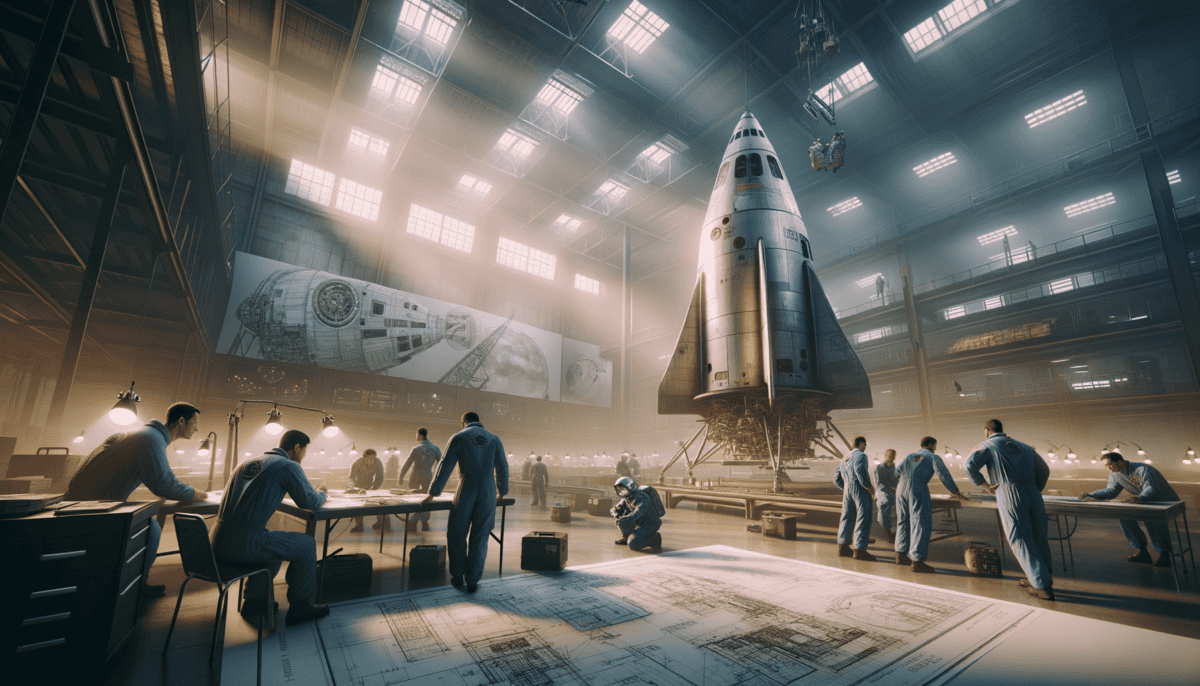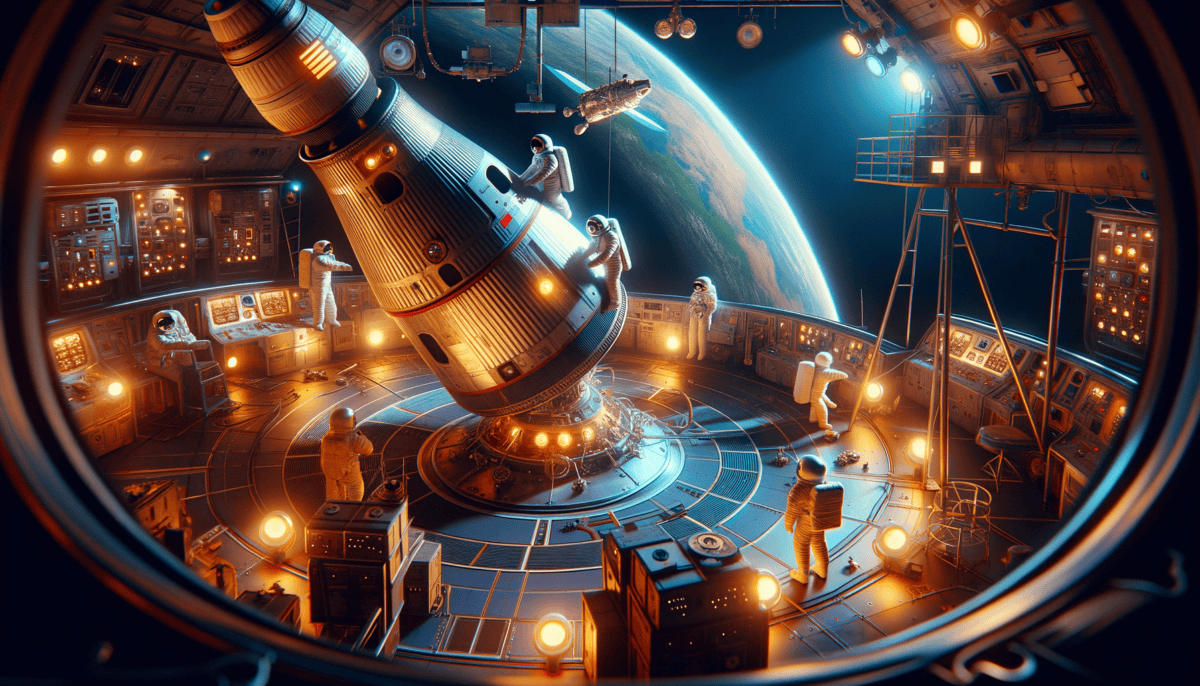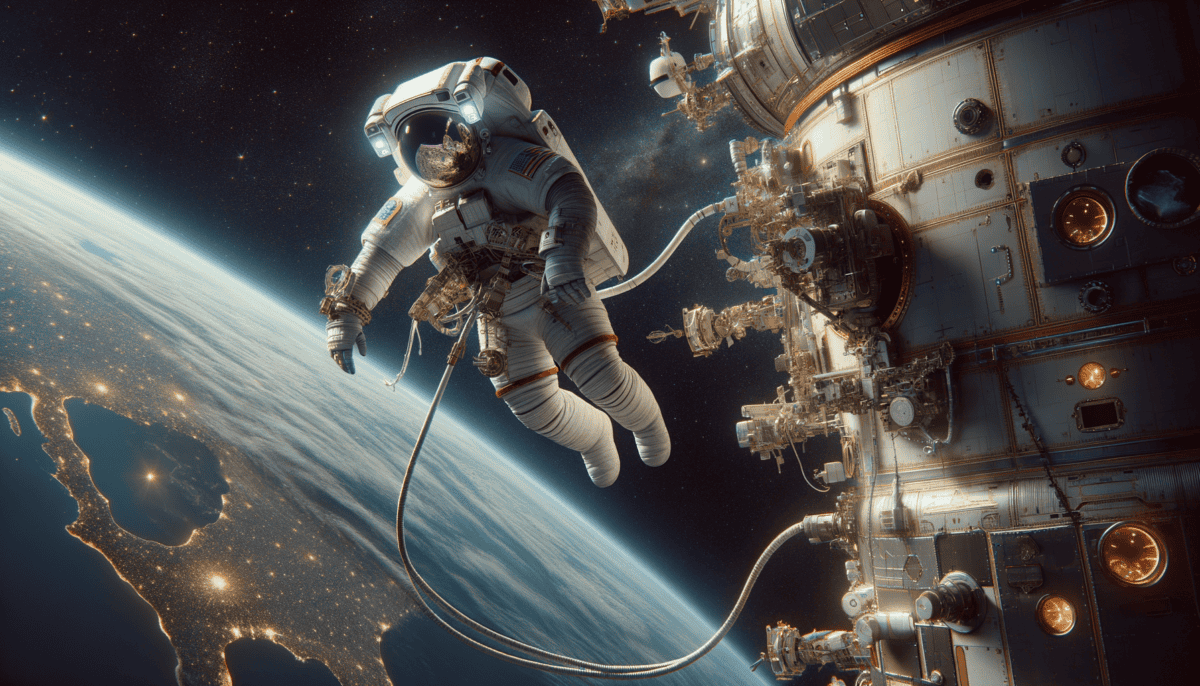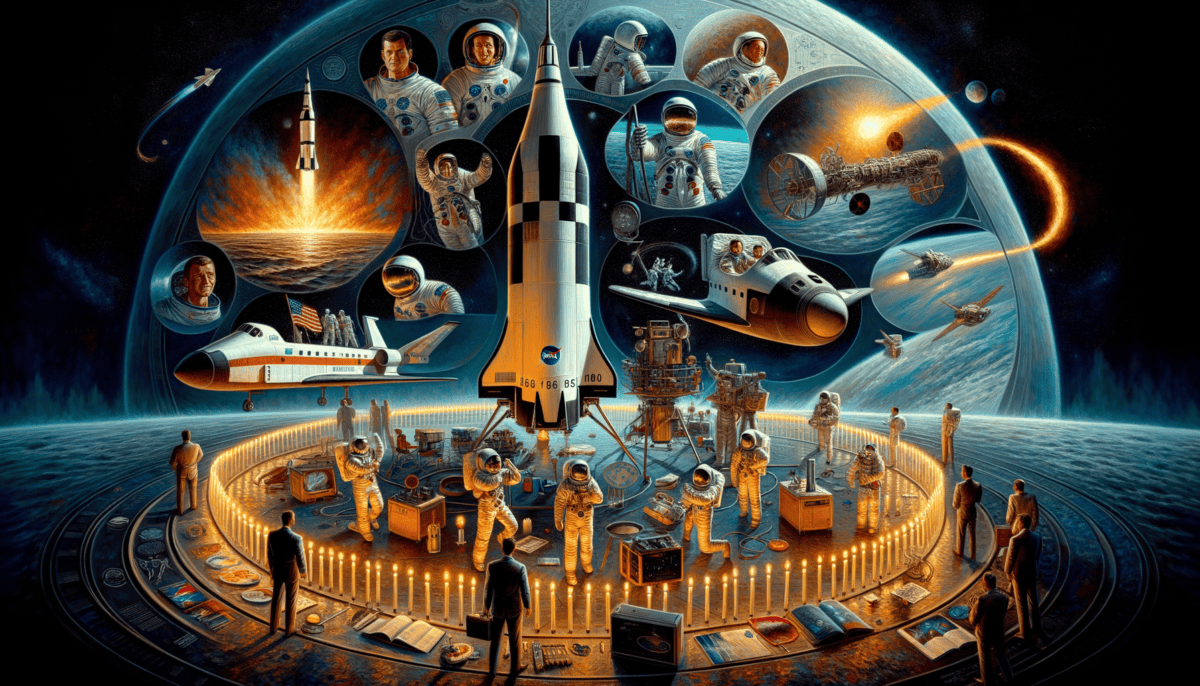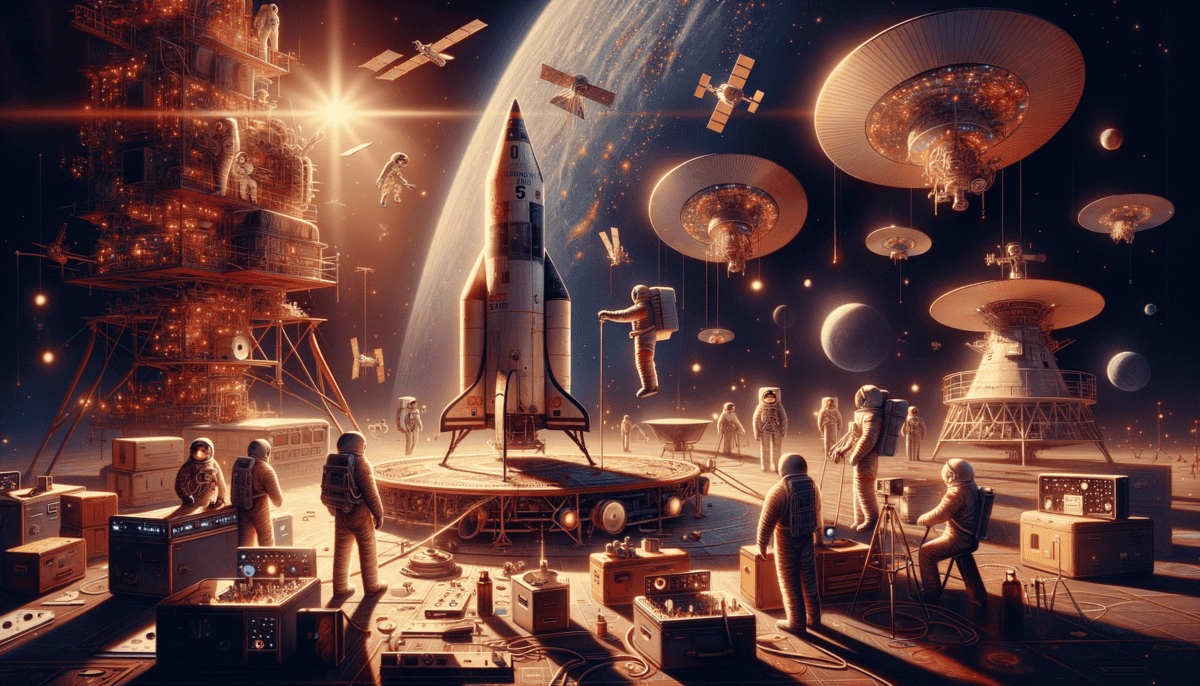The Dream Takes Flight
Tommy pressed his nose against the cold glass window, eyes fixed on the twinkling stars above. It was 1962, and like many other eight-year-old boys across America, he dreamed of touching those distant lights.
"Mom! Did you hear? They picked new astronauts for Project Gemini!" Tommy bounced excitedly in his pajamas, clutching his toy rocket ship.
The real astronauts were just as excited as Tommy. Gus Grissom, one of the brave pilots chosen for Gemini, had wanted to fly since he was a little boy too. Now he would get his chance to go higher than ever before.
"Being an astronaut isn't easy," Gus told his fellow pilots during training. "But nothing worth doing ever is."
Every day, the astronauts worked hard to get ready for space:
• They rode in spinning chairs until they got dizzy
• They practiced in pretend spaceships
• They learned about the stars and planets
• They exercised to get super strong
• They studied lots of space science
Racing to the Stars
America wasn't alone in wanting to explore space. The Soviet Union (another country far away) was trying to get there first! This made everyone work even harder.
“We choose to go to the moon not because it is easy, but because it is hard!” President Kennedy told the nation. His words made everyone want to reach for the stars.
John Young, another astronaut, spent hours practicing in a big pool that helped him feel what space might be like. "It's like learning to swim," he said with a smile, "except you're swimming in the sky!"
Building Dream Machines
The Gemini spacecraft was tiny – about the size of a car! But it had everything two astronauts needed:
"It's like a little house in space," Neil Armstrong explained to a group of kids. "We have food, water, and even a window to see Earth!"
Engineers worked day and night to make sure everything was perfect. They knew the astronauts' lives depended on their work. Every wire, every button, every switch had to work just right.
• Stay in space for long times
• Move their spacecraft in space
• Meet up with other spacecraft
Tommy watched all this on TV, his heart beating faster with each new success. He wasn't the only one – millions of kids across America were falling in love with space. They built model rockets, read space books, and dreamed of their own adventures among the stars.
As the sun set outside Tommy's window, he hugged his toy rocket tight. "Someday," he whispered to the stars, "I'm going to fly up there too."
The race to space was just beginning, and everyone – from the brave astronauts to the dedicated engineers to little boys like Tommy – was ready to make history. The dreams that started in backyards and bedrooms across America were about to soar higher than anyone had ever gone before.
Breaking Earthly Boundaries
The sun was barely peeking over the horizon at Cape Kennedy when the Gemini astronauts arrived for another day of training. The air buzzed with excitement as they prepared for humanity’s next giant leap.
“Today’s the day we try out the new spacesuits!” Jim McDivitt called out to his fellow astronauts. His eyes sparkled with excitement.
Getting Ready for Space
Training was hard work! The astronauts had to learn many new things:
• How to live in zero gravity
• What to do if something went wrong
• How to eat and sleep in space
• Ways to exercise without gravity
• How to work together as a team
Ed White squeezed into the tiny spacecraft simulator. It was like sitting in a very small car with lots of buttons and switches. “It’s cozy in here!” he laughed.
“Space is like learning to ride a bike,” Frank Borman told the newer astronauts. “At first it seems scary, but then you get the hang of it!”
Building the Space Ship
Down in the big airplane hangar, hundreds of people worked on the real Gemini spacecraft. Each person had an important job:
“Every single bolt and wire matters,” said Sally, one of the engineers. “We’re building something that’s never been built before!”
Testing, Testing, 1-2-3!
Before anything could fly in space, it had to be tested many times. The astronauts practiced in special ways:
They floated in big pools to feel like they were in space. They rode in planes that flew up and down to feel zero gravity. Some days they sat in spinning chairs until they got really dizzy!
“My head is spinning like a top!” Tom Stafford laughed after one practice session. “But that’s okay – in space, everything spins!”
Getting Minds and Bodies Ready
The astronauts had to be super healthy. They exercised every day and ate special food. They also had to be very smart and brave.
“Sometimes I get a little scared,” one astronaut admitted to his friend. “But then I remember – we’re doing this for everyone back on Earth!”
Back in the control room, teams of people practiced talking to the spacecraft. They used special code words and had to be ready for anything that might happen.
“Ground Control to Gemini, do you copy?” the radio crackled.
“Loud and clear, Houston!” came the reply from the practice capsule.
Almost Ready to Fly
As the first Gemini mission got closer, everyone worked harder. They checked everything three times, then checked it again. Nothing could go wrong when you’re heading to space!
The giant rocket stood tall on the launch pad, pointing to the stars. Soon it would carry brave astronauts higher than almost anyone had ever gone before.
That night, looking up at the stars, the astronauts thought about their upcoming adventures. They weren’t just going to space – they were helping to write the next chapter in human history.
The First Orbital Dance
The big moment had arrived! On December 15, 1965, two Gemini spacecraft were ready to try something that had never been done before – meeting up in space!
Two Ships in the Sky
Wally Schirra and Tom Stafford sat in their Gemini 6 spacecraft. Their friends Frank Borman and Jim Lovell were already up in space in Gemini 7.
“Ready for the space dance?” Wally asked Tom with a smile.
“You bet! Let’s catch up with our friends!” Tom replied.
The countdown began: “10… 9… 8… 7… 6… 5… 4… 3… 2… 1… LIFTOFF! “
“The rocket rides smooth as silk!” radioed Wally as they zoomed up into the sky.
Playing Tag in Space
Finding another spacecraft in space is super tricky. It’s like finding a tiny ant in a huge backyard! But these astronauts were ready.
“I see them!” shouted Tom. “They look like a bright star moving across the sky!”
Slowly, very slowly, the two spacecraft got closer and closer. They had to be super careful – no bumping allowed in space!
Space Friends Say Hello
Finally, the two spaceships were close enough that the astronauts could see each other through their windows. They were only 6 feet apart!
The astronauts talked through their radios:
“Hey up there!” called Wally.
“Welcome to our neighborhood!” Frank answered from Gemini 7.
Working Together
This wasn’t just about having fun in space. The astronauts had important work to do:
• Take pictures of each other's spacecraft
• Test how well they could fly close together
• Practice space "parking"
• Learn how to find each other in space
• Try different ways to move their spaceships
Everything they learned would help future astronauts go to the moon!
Mission Complete!
After three amazing orbits flying together, it was time for Gemini 6 to come home. Gemini 7 stayed up to finish their long mission.
“See you back on Earth!” Wally called as they started their journey home.
“We did it!” cheered the Mission Control team when both spacecraft landed safely. “We really danced in space!”
This special dance in space showed that astronauts could find each other and work together high above Earth. It was another big step toward landing on the moon!
As the astronauts stepped out of their spacecraft back on Earth, they knew they had just helped write a new page in the history of space travel. More adventures were waiting in the stars above!
Walking in the Void of Space
The date was June 3, 1965. Astronaut Ed White was about to do something that no American had ever done before – walk in space!
Getting Ready for the Big Walk
“Are you nervous, Ed?” asked Jim McDivitt, Ed’s space buddy and commander of Gemini 4.
“Excited!” Ed smiled as he put on his special space suit. It was like wearing a balloon that could keep him safe in space.
“Remember Ed, you’re tied to the spacecraft with a golden rope. It’s your lifeline!” Jim reminded him.
The Big Moment
The spacecraft door opened slowly. Ed could see the whole Earth below!
“It’s the most beautiful sight!” Ed said as he floated out of the door.
Here’s what Ed needed to stay safe in space:
• Special space suit to keep him warm and give him air
• Golden rope (called a tether) to keep him connected to the ship
• Space gun to help him move
• Camera to take pictures
• Special gloves to protect his hands
Dancing Among the Stars
Ed floated freely in space. He used his space gun to zoom around like a superhero! ♂️
“This is fun!” Ed laughed. “I feel like a human satellite!”
Jim watched from inside the spacecraft, taking pictures of his friend’s amazing space dance.
Time to Come Home
After 23 minutes of floating in space, it was time to come back inside.
“Just a few more minutes,” Ed begged. He was having so much fun!
“Ed, come on in now,” Mission Control said kindly but firmly.
“This is the saddest moment of my life,” Ed said as he slowly made his way back to the spacecraft door.
A New Space Hero
When Ed got back to Earth, everyone called him a hero! He had shown that astronauts could work outside their spaceships.
His brave walk taught NASA many important things:
• How to move in space without gravity
• What kind of tools astronauts needed
• How long they could stay outside
• How to keep astronauts safe
Ed’s amazing space walk opened the door for more astronauts to work in space. Each step they took brought them closer to reaching the moon!
Facing the Storm
The year was 1967. The Gemini program had taught NASA so much about space. But space exploration is never easy.
A Sad Day for Space Heroes
On a cold January day, three brave astronauts were practicing for their next mission. They were inside their Apollo spacecraft:
• Gus Grissom, who flew on Gemini 3
• Ed White, our first space walker
• Roger Chaffee, a new astronaut
“Hey, there’s a fire in here!” Gus called out. The spaceship had caught fire!
Learning from Hard Times
The whole NASA family was very sad. They lost three good friends that day.
“We will make our spaceships safer,” promised Deke Slayton, the astronaut boss. “We won’t let their sacrifice be for nothing.”
NASA worked extra hard to fix everything that could be dangerous:
The Spirit of Space Lives On
“Should we stop going to space?” some people asked.
“No,” said the astronauts. “Space is hard, but we must keep trying. Our friends would want us to.”
Getting Back to Work
The NASA team worked harder than ever. They checked everything twice, then checked it again!
“We’re making the best spaceships ever,” said the engineers proudly.
New Hope Rises
After many months of hard work, NASA was ready to fly again. The new spaceships were much safer.
“We will reach the moon,” said the astronauts. “And when we do, we’ll remember our brave friends.”
Looking to Tomorrow
The sad time taught NASA important lessons:
• Always be extra careful
• Check everything many times
• Never give up when things get hard
• Remember those who came before
The dream of space was still alive. NASA would keep reaching for the stars, but now they would do it more safely than ever before.
“We do these things not because they are easy,” said President Kennedy’s words on the wall, “but because they are hard.”
A Dream Made Real
The last Gemini mission blasted off in November 1966. After 10 amazing flights, NASA was ready for its biggest challenge yet – going to the moon!
The Final Flight
Buzz Aldrin and Jim Lovell rode inside Gemini 12, the last spaceship of the program. They had big smiles on their faces.
“Gemini taught us how to live in space,” said Buzz. “Now we’re ready for the moon!”
Looking Back at Our Success
The Gemini program taught NASA many important things:
• How to meet up with other spaceships in orbit
• How to work outside in space
• How to stay in space for long trips
• How to work together as a team
The Heroes Who Made It Happen
Ten teams of brave astronauts flew on Gemini missions. Each one helped make space travel better and safer.
Getting Ready for Apollo
“Now we know we can do it,” said Chris Kraft at Mission Control. “We can send people to the moon!”
The Apollo spaceships were bigger and better than Gemini. They had room for three astronauts and special moon landing parts.
A New Adventure Begins
As the Gemini program ended, everyone felt proud and excited. The next stop was the moon!
“Gemini was our school in space,” said astronaut John Young. “Apollo will be our biggest test.”
The Space Story Lives On
Today, we still use what Gemini taught us. Space stations, spacewalks, and long space trips all started with Gemini.
Young people still look up at the stars and dream of space. Some will be the next astronauts, flying new spaceships to Mars and beyond!
“Space is for everyone,” says NASA today. “Come explore with us!”
The Gemini program ended, but our space journey was just beginning. Thanks to these brave explorers, we learned how to live and work in space. Their courage and hard work helped us reach the moon and showed us that anything is possible when we dream big!


